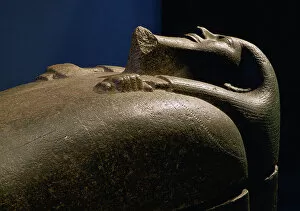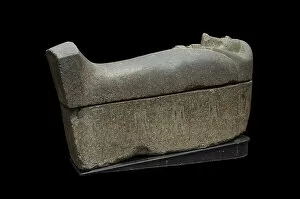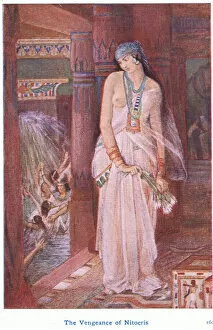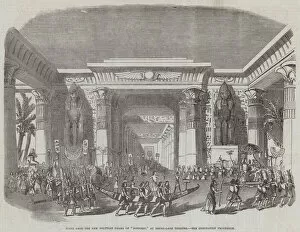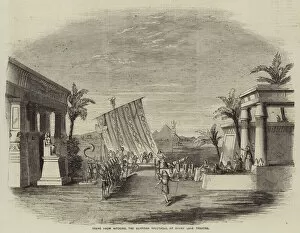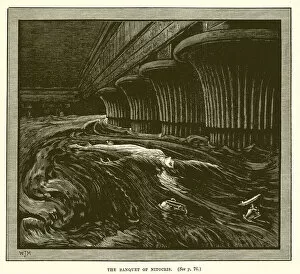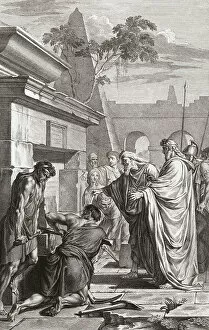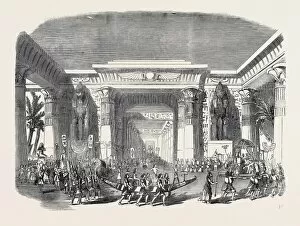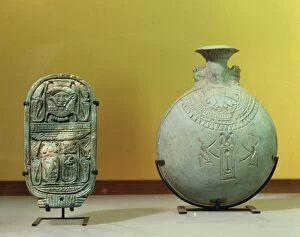Nitocris Collection
Nitocris, the daughter of King Psamtek I, was a prominent figure in ancient Egypt during the 7th century BC
For sale as Licensed Images
Choose your image, Select your licence and Download the media
Nitocris, the daughter of King Psamtek I, was a prominent figure in ancient Egypt during the 7th century BC. The Sarcophagus of Pabasa, Great Steward to Nitocris, provides us with a glimpse into her royal lineage and importance. Carved from stone, this artifact symbolizes her power and influence. Intriguingly, it is known for her vengeance. According to Herodotus' accounts, she avenged her brother's murder by inviting his killers to a banquet. Little did they know that their fate was sealed as Nitocris flooded the room with the mighty Nile River. Her story captivated audiences even centuries later when it became the subject of various dramatic performances at Drury Lane Theatre. Scenes from "Nitocris" were brought to life through engravings and lithographs, showcasing her coronation procession and an Egyptian spectacle. The Banquet holds particular significance in both history and artistry. Depicted in engravings from different periods such as 1890 or even as early as the 17th century by Eustache Le Sueur's painting titled "Darius the Great Opening the Tomb of Nitocris, " these portrayals capture the tension and drama surrounding this infamous event. Beyond theatrical representations, physical artifacts linked to they have been discovered over time. A little flask belonging to Psamtik II made of siliceous majolica alongside a box lid bearing Nitocris' name further solidify her existence within ancient Egyptian society. While some aspects of Nitocris' story may be shrouded in legend or mythological embellishments over time, there is no denying that she left an indelible mark on history through tales of revenge and power struggles within Egypt's Sixth Dynasty.

